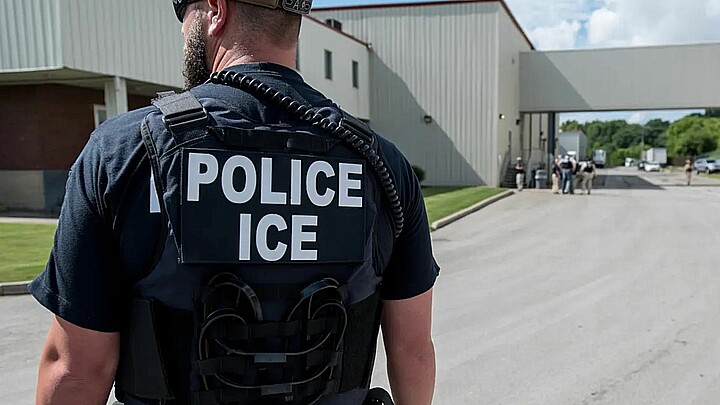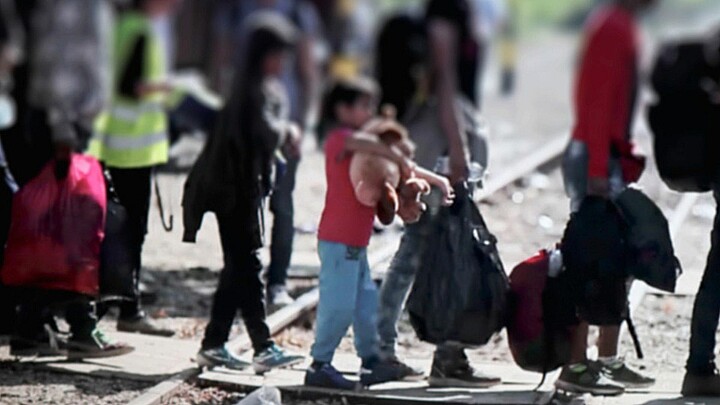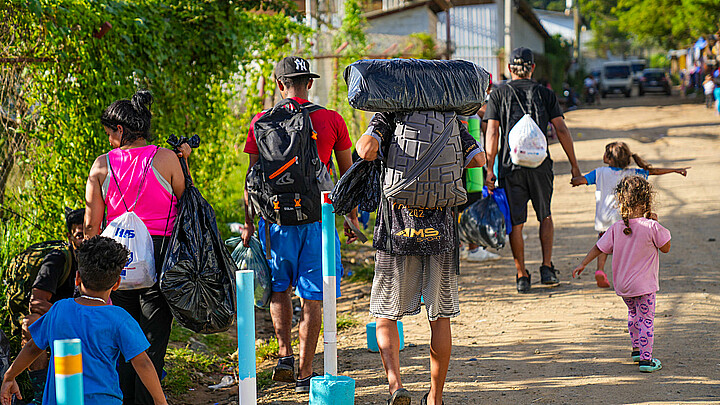Immigration
Trump's mass deportation plan: who would be the most vulnerable and why
The immigrant community in the United States has questioned the issue: How will mass deportations be carried out?

December 10, 2024 3:20pm
Updated: December 11, 2024 10:20am
The plan for mass deportations of immigrants promised by President-elect Donald Trump, who will return to the White House in January 2025 after winning the presidential elections, has raised concerns amid the immigrant community in the U.S.
Mass deportations are being prepared “silently,” according to a CNN report. The plan would be in the hands of Trump's allies and some people in the private sector, according to sources familiar with the matter cited by the media.
Many in the U.S. immigrant community have raised the following questions: How will mass deportations be carried out? Are they legal? Will the United States government have the resources to solve them? Are there groups more vulnerable than others? Where will the greatest impacts be seen?
Although no details have been given about the plan, here is what is known so far:
“It’s not gonna be, a mass sweep of neighborhoods. It’s not gonna be building concentration camps. I’ve read it all. It’s ridiculous,” said Tom Homan, who previously served as acting director of Immigration and Customs Enforcement for Trump, in a CBS News interview that aired last month.
“They’ll be targeted arrests. We’ll know who we’re going to arrest, where we’re most likely to find ‘em based on numerous, you know, investigative processes,” he added.
Immigrants from Mexico, Cuba, Venezuela, Nicaragua, Honduras, Haiti and El Salvador could be at greater risk if mass deportation takes place, since programs that grant legal status - Humanitarian Parole, Temporary Protected Status (TPS) or Deferred Action for Childhood Arrivals (DACA) - could be eliminated.
“There are half a million young people who have DACA. It is suspected that there may be 1.6 million young people who qualified for DACA,” said Miami immigration Wilfredo Allen. “They tried to eliminate DACA before. You can delete it now. Another half a million people are in danger.”
This Sunday, in an interview with NBC Meet the Press, Trump said that he will work with Democrats on a plan to “do something with the Dreamers,” without giving further details.
“They were brought to this country many years ago,” he noted. “Some of them are no longer young, and in many cases they have been successful. They have excellent jobs. In some cases, they have small businesses. In some cases, they may have large companies, and we are going to have to do something with them.”
In addition, a list is being prepared of countries to which migrants could be deported when their countries of origin refuse to accept them. In this case, there could be immigrants from the Turks and Caicos Islands, Bahamas, Panama and Grenada, among others.
Allen explained that deportations are costly. In the case of Venezuela, there are no direct flights from the United States and, therefore, one would have to be deported through Panama, Colombia or the Dominican Republic.
It would also be expensive to deport to Cuba.
“It is very expensive,” Allen said. “They are ICE planes and the highest number of Cubans who have been deported on a flight, in one month, has been 80. It is very difficult to deport to Cuba. The deportation flights that are on the border today, the price is very high,” he indicated.
Furthermore, “you cannot [deport] a Colombian, or a Peruvian, or an Ecuadorian, or a Ukrainian to Mexico, because they have no residence or ties with Mexico.”
According to CNN, “one of the key elements of any plan to deport immigrants is detention space, which Democratic and Republican administrations have grappled with because of limited resources.”
The U.S. government works with the private sector to “build, operate and manage detention facilities, and works with county jails.”
“There’s a small number of beds that are federally owned facilities. The rest of them are split between private detention facilities and county jails,” said John Sandweg, President Barack Obama’s acting director of Immigration and Customs Enforcement during the Obama administration.
“There’s an ICE presence, but by and large the people operating the detention centers are employees of the contractors.”
The typical cost of “apprehending, detaining, processing and removing” an undocumented immigrant from the U.S. in 2016 was $10,900, according to information published by ICE. In 2018, ICE said the typical cost of transporting one deportee to their home country was $1,978.
Since then, the costs have only increased, which may create an additional hurdle for incoming Trump officials who are determined to move deportation plans forward.
Brian Hughes, a senior Trump adviser, said that when the president-elect returns to office, one of his priorities will be security at the border.
“President Trump won a landslide victory Tuesday because Americans embrace his common sense policy to secure our border and implement mass deportation for illegal migrants,” Hughes said.











